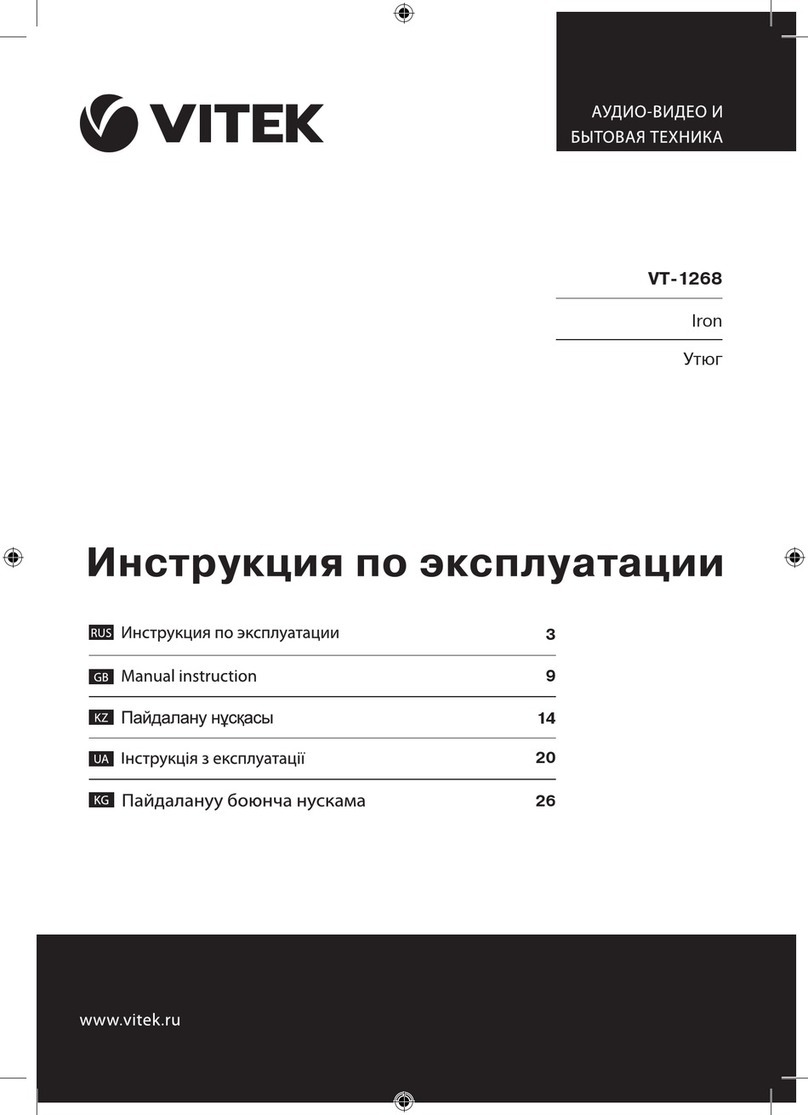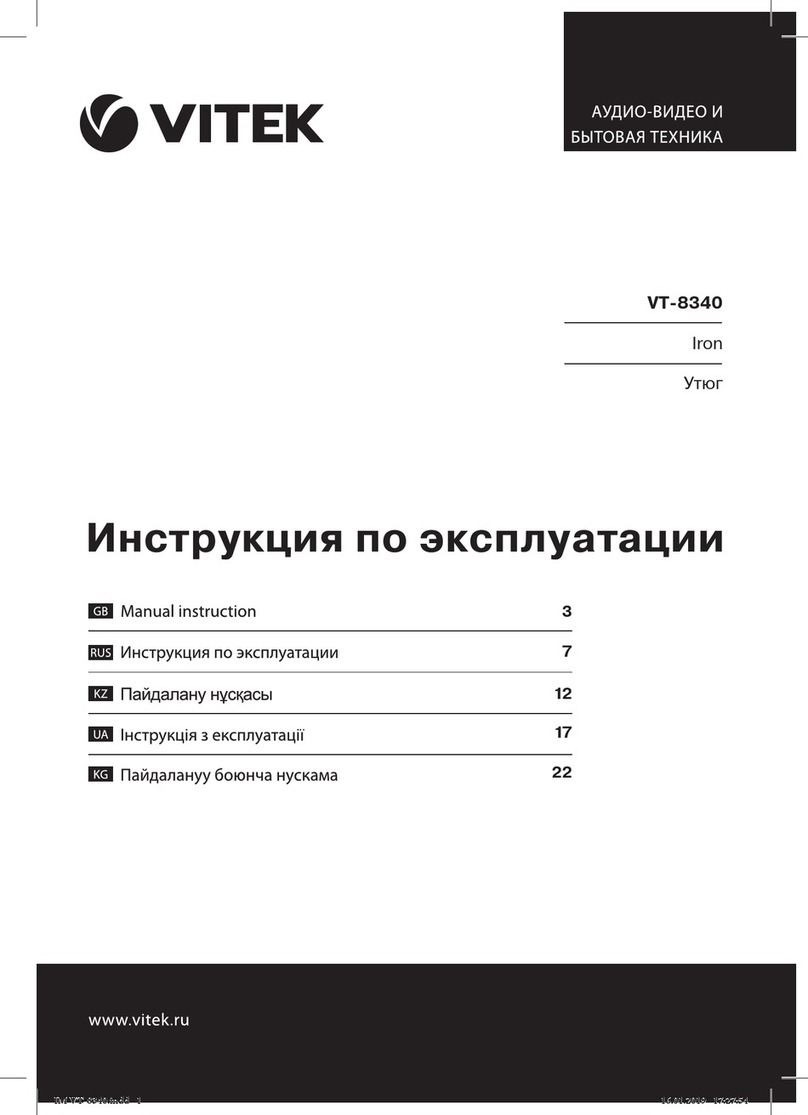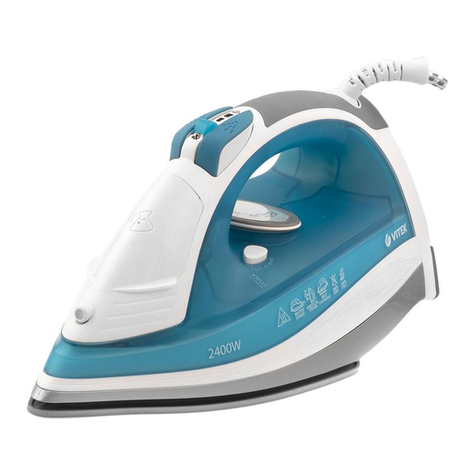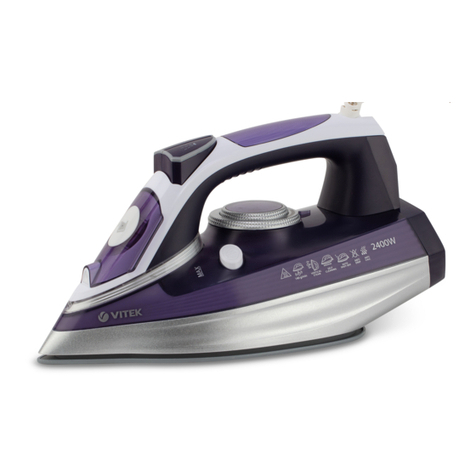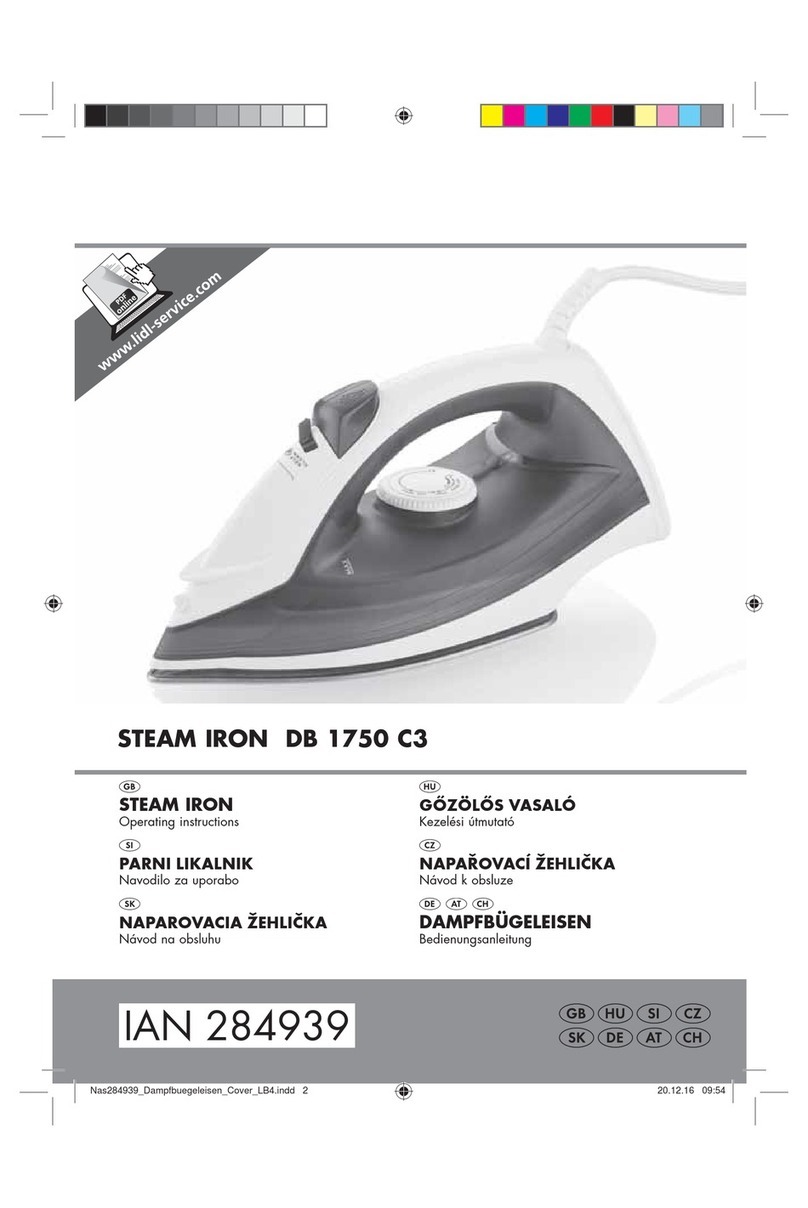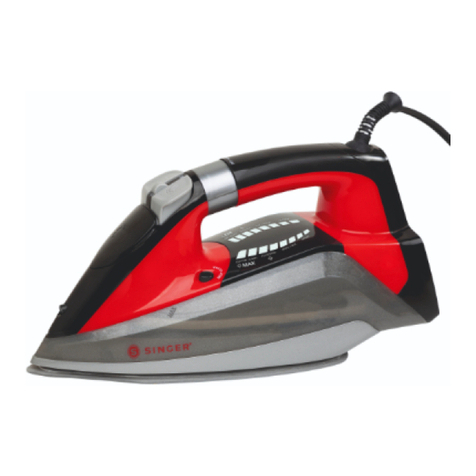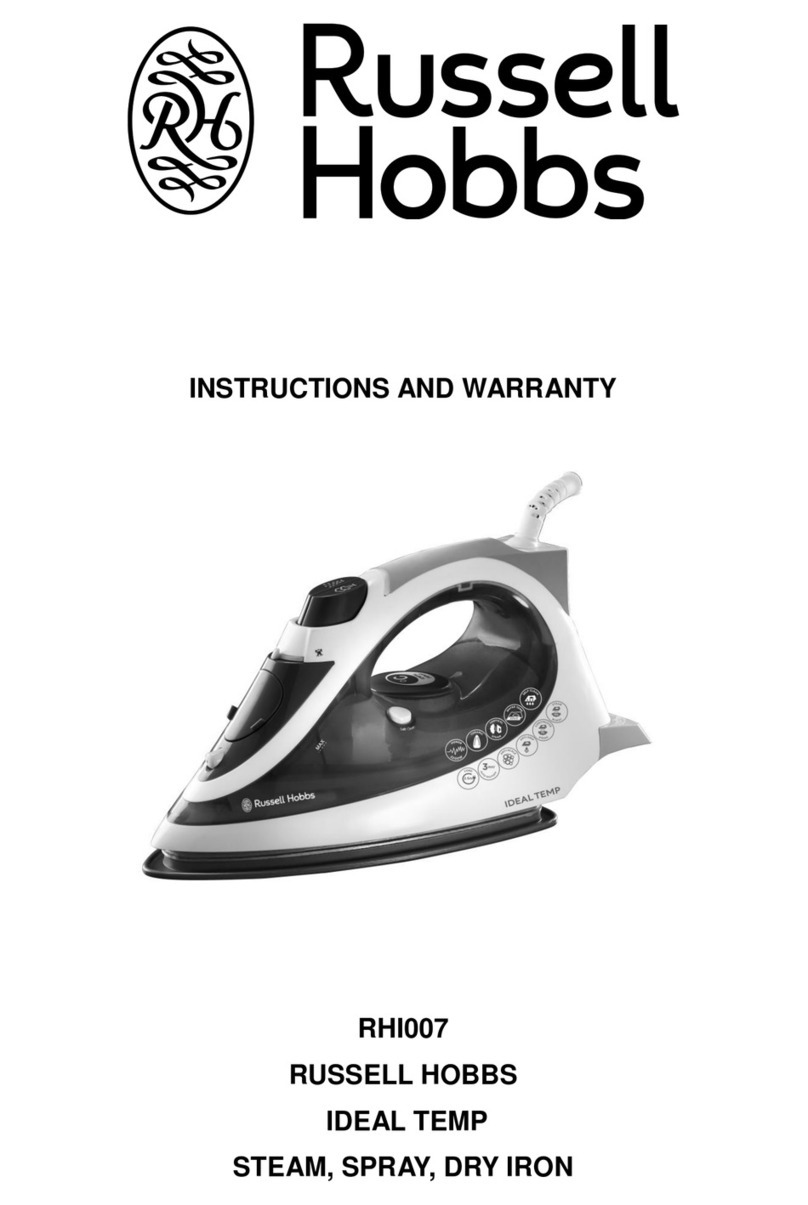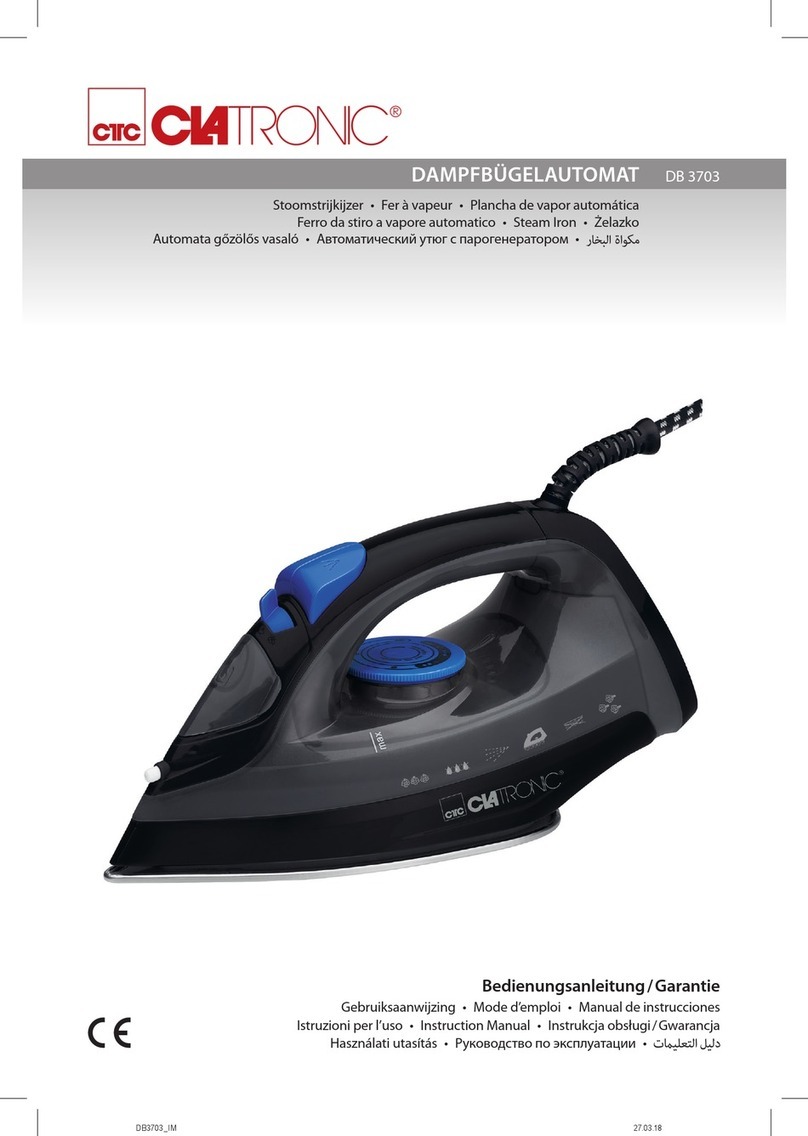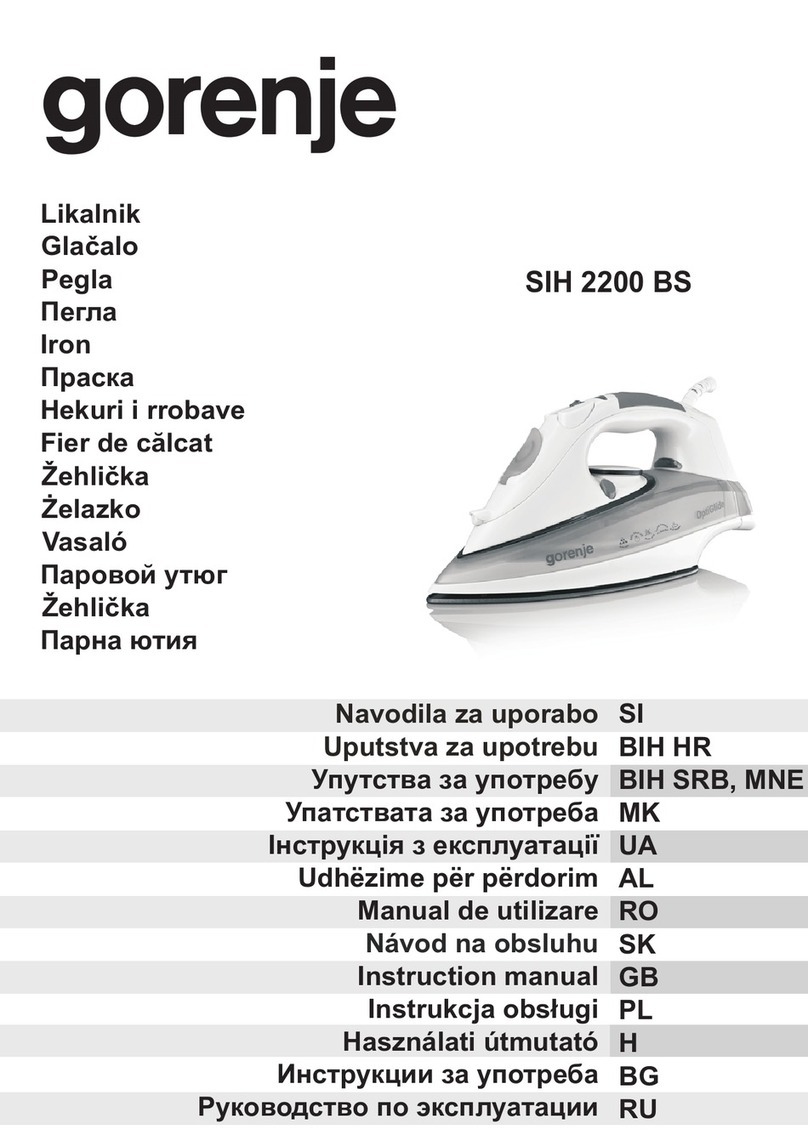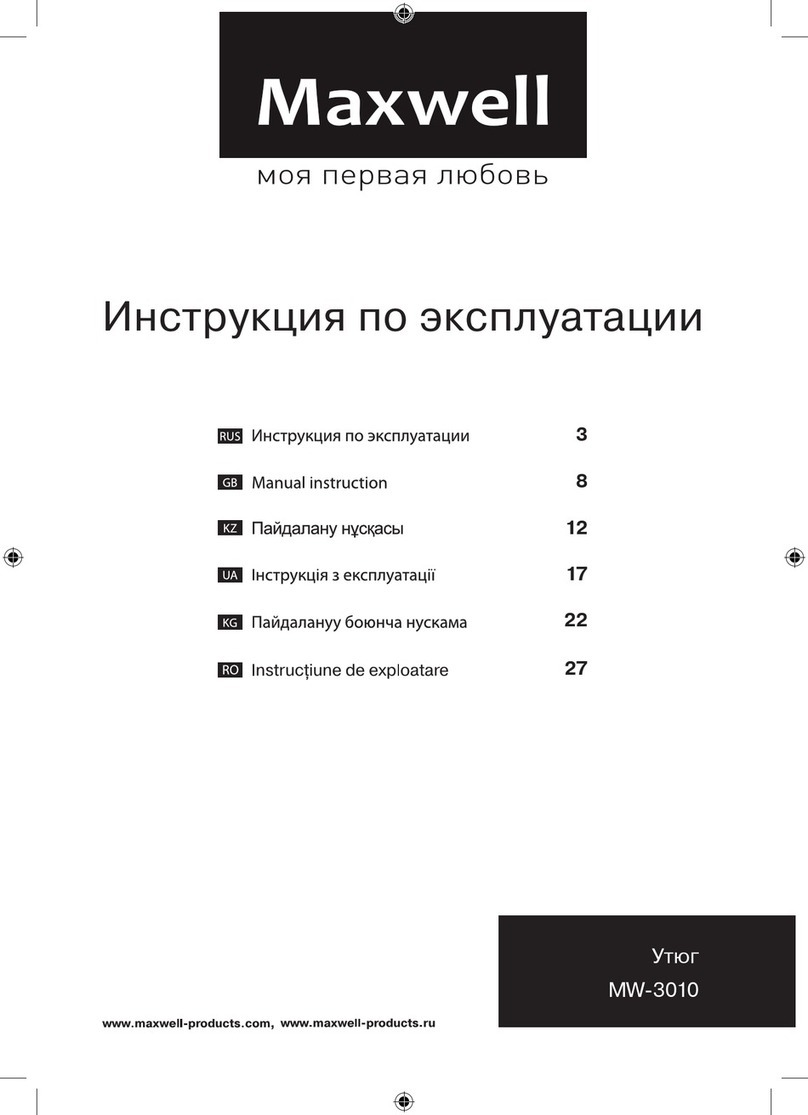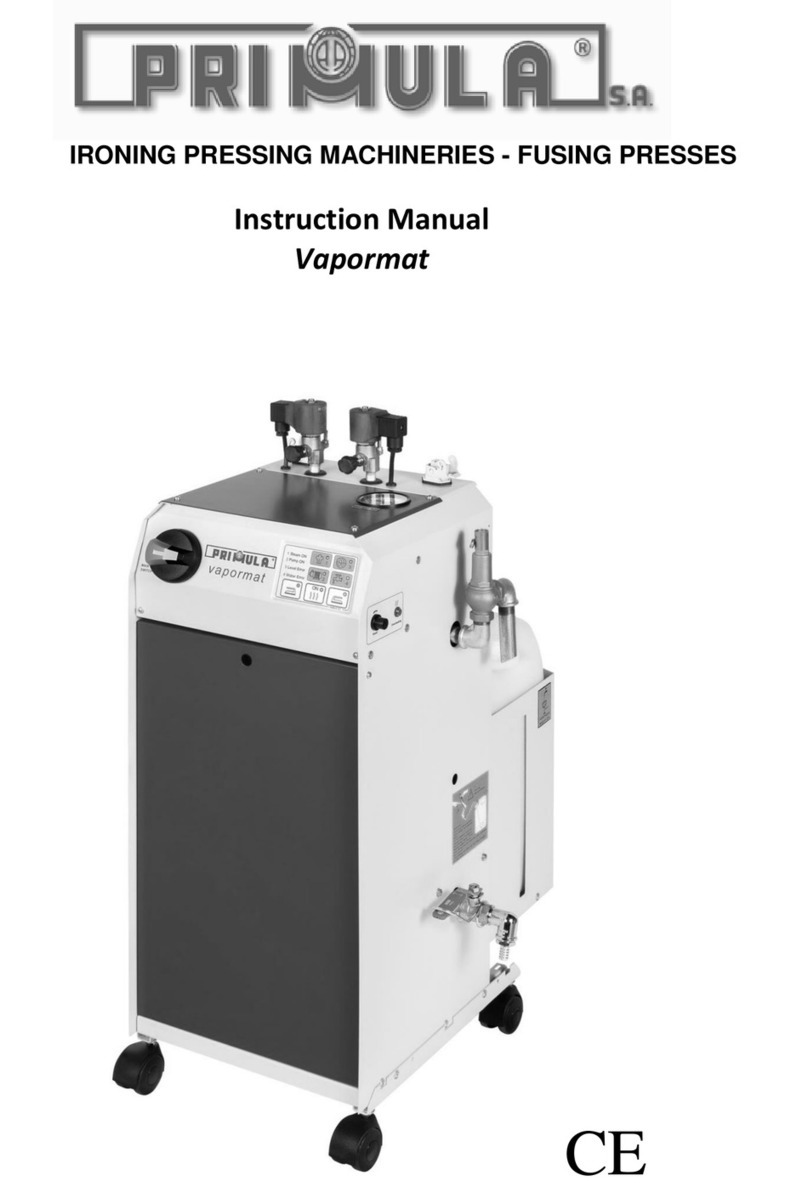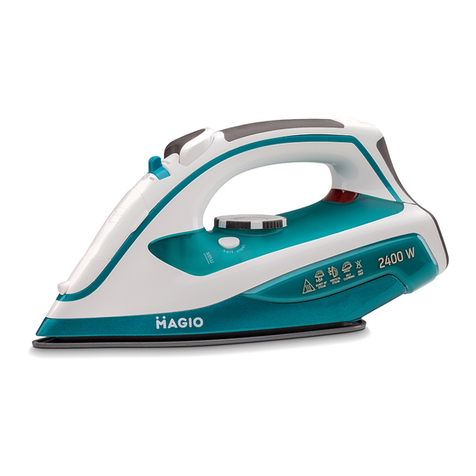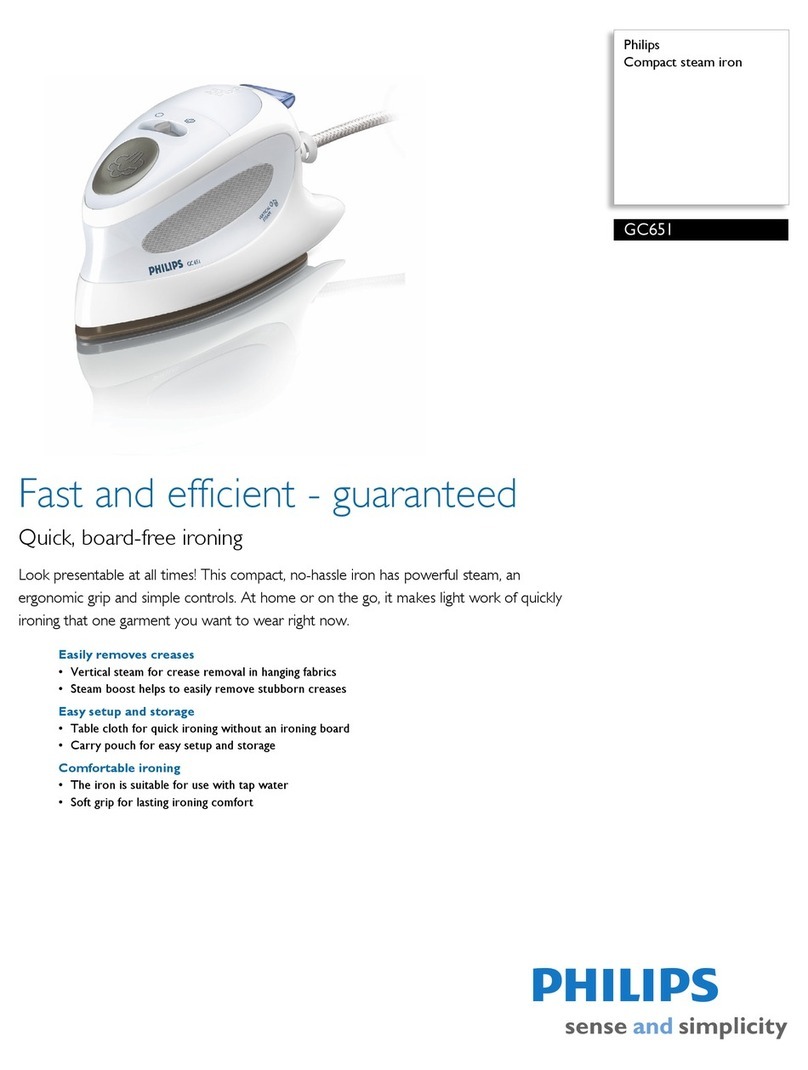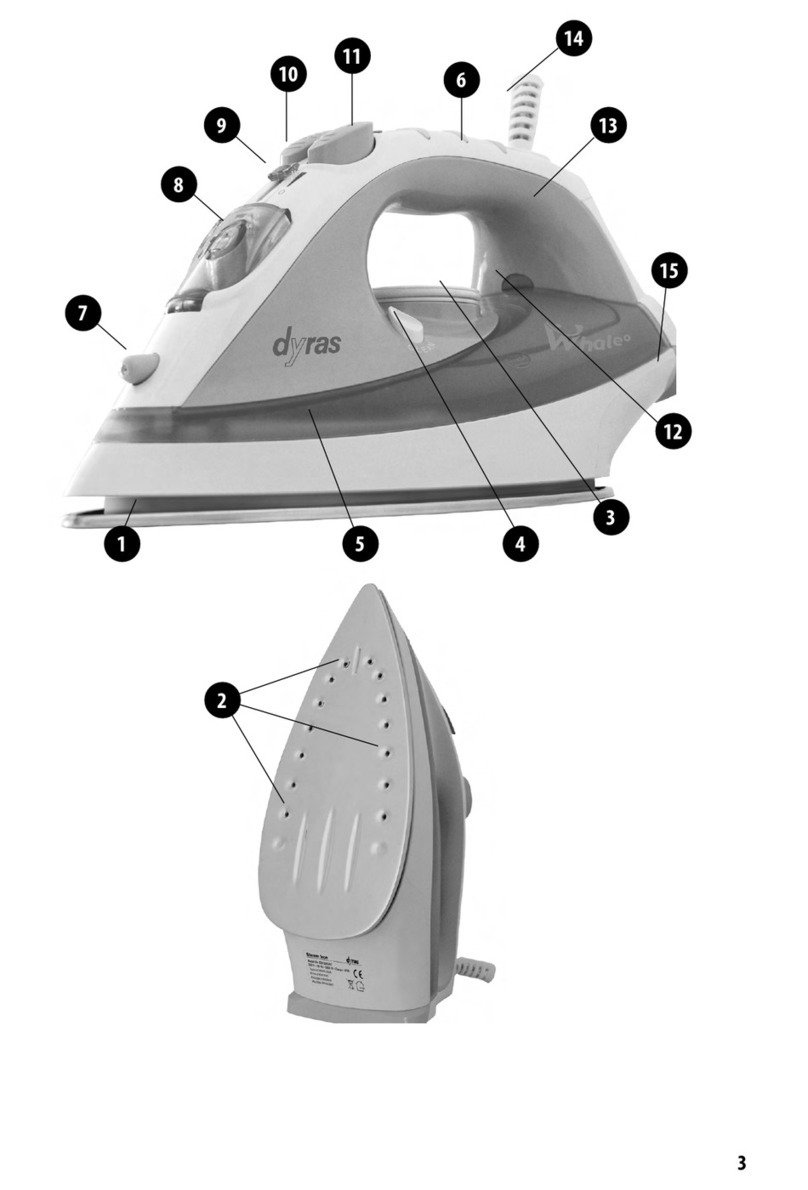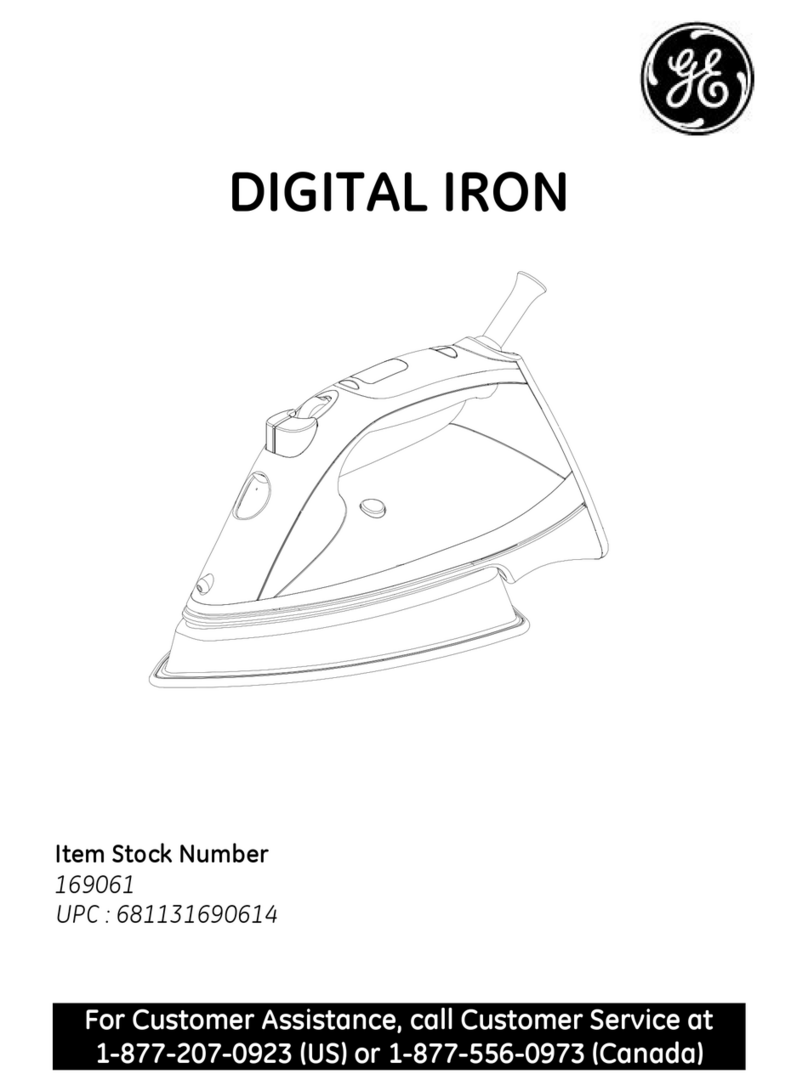
5
•If an item is made of mixed fabrics, the iron
should be set to the lowest ironing temper-
ature (for instance, if an item is made of
60% polyester and 40% cotton, it should be
ironed at temperature used for polyester iron-
ing «•»).
•If you cannot define the fabric structure, find
a spot that is inconspicuous when the item is
being worn and select the ironing temperature
experimentally (always start with the lowest
temperature and raise it gradually until you get
the desired result).
•Corduroy and other fabrics that become
glossy quickly should be ironed strictly in
one direction (in the direction of the pile) with
slight pressure.
•To avoid appearance of glossy spots on syn-
thetic and silk fabrics, iron them backside.
SETTING THE IRONING TEMPERATURE
•Place the iron on its base (8).
•Insert the power plug into the mains socket.
•Turn the control knob (11) to set the required
ironing temperature: «•», «••», «•••»
(depending on the type of fabric), the pilot
lamp (9) will light up.
•Once the temperature of the soleplate (13)
reaches the set point, the pilot lamp (9) will go
out and you can start ironing.
Notes:
•If you are ironing at hot temperature and you
need to switch to lower temperature, it is rec-
ommended to wait until the soleplate temper-
ature decreases and resume ironing only after
the indicator (9) lights up.
•While steam ironing, set the ironing tempera-
ture «••» or «•••», the steam ironing section
is marked with corresponding symbols on the
temperature control knob (11).
WATER SPRAY
•You can dampen the fabric by pressing the
spray button (4) several times.
•Make sure that there is enough water in the
water tank (10).
DRY IRONING
•Place the iron on its base (8).
•Insert the power plug into the mains socket.
•Set the continuous steam supply knob (3) to
the lower position – continuous steam sup-
ply is off.
•Turn the control knob (11) to set the required
ironing temperature: «•», «••» or «•••»
(depending on the type of fabric), the pilot
lamp (9) will light up.
•Once the temperature of the soleplate (13)
reaches the set point, the pilot lamp (9) will go
out and you can start ironing.
•After using the iron switch the tempera-
ture control knob (11) to the «OFF» position.
Unplug the unit and let the iron cool down
completely.
STEAM IRONING
While steam ironing, set the ironing tempera-
ture «••» or «•••», the steam ironing section is
marked with corresponding symbols on the tem-
perature control knob (11). The iron is provided
with an anti-drip valve that stops water supply if
the soleplate temperature is too low; this prevents
dripping from the soleplate (13) openings. During
heating and cooling of the iron, you will hear char-
acteristic clicks of the anti-drip valve opening/
closing, which indicates its normal operation.
•Place the iron on its base (8).
•Set the continuous steam supply knob (3) to the
lower position – continuous steam supply is off.
•Insert the power plug into the mains socket.
•Make sure that there is enough water in the
water tank (10).
•Turn the control knob (11) to set the required
ironing temperature: «••» or «•••», the indi-
cator (9) will light up.
•Once the temperature of the soleplate (13)
reaches the set point, the pilot lamp (9) will go
out and you can start ironing.
•Turn the continuous steam supply knob (3) to
set the steam generation rate, steam will start
going out from the soleplate (13) openings.
The knob (3) has three fixed positions which
allow to control steam supply intensity. Move
the knob (3) up to switch the steam supply on.
•After you finish ironing, set the temperature
control knob (11) to the «OFF», position, and
the continuous steam supply knob (3) to the
lower position – steam supply is off. Pull the
power plug out of the mains socket and let the
iron cool down completely.
ATTENTION!
If steam is not supplied constantly during the
operation, check whether the temperature con-
trol knob (11) is set properly and whether there is
water in the water tank (10).
VT-1215.indd 5 21.11.2017 14:36:24









